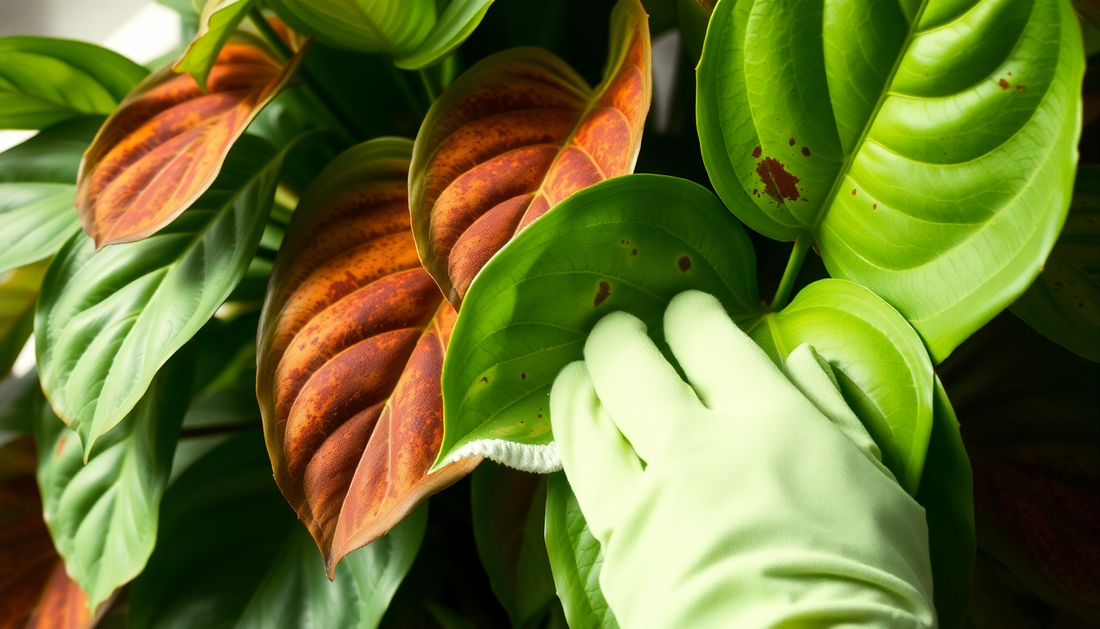
Tackling Rust: Restoring the Shine on Your Houseplant Leaves
As a passionate plant parent, there's nothing more disheartening than seeing your beloved houseplants succumb to a pesky disease like rust. This unsightly fungal infection can wreak havoc on the lush foliage you've worked so hard to cultivate, leaving behind unsightly orange or brown spots that can quickly spread if left unchecked.
But fear not, fellow gardeners! In this comprehensive guide, we'll delve into the world of plant rust, exploring its causes, symptoms, and the most effective natural and organic remedies to help you restore the vibrant, healthy glow to your indoor oasis.
Understanding Plant Rust
Rust is a common fungal disease that can affect a wide range of plants, both indoors and out. It's caused by a group of fungi known as Puccinia, which thrive in warm, humid environments and can quickly spread from plant to plant if the conditions are right.
The telltale signs of rust include the appearance of small, circular or elongated spots on the leaves, often in shades of orange, yellow, or brown. These spots can eventually coalesce, creating a mottled, unsightly appearance that can severely impact the plant's overall health and vigor.
Identifying the Culprit
Before you can effectively treat plant rust, it's important to correctly identify the underlying cause. While the symptoms may appear similar, different types of rust can affect various plant species, and the treatment approach may vary accordingly.
Some of the most common types of plant rust include:
- Rose Rust: Affecting roses and other members of the Rosaceae family
- Geranium Rust: Targeting geraniums and other Pelargonium species
- Chrysanthemum Rust: Impacting chrysanthemums and related plants
- Snapdragon Rust: Affecting snapdragons and their close relatives
By carefully examining the affected leaves and cross-referencing with plant identification resources, you can pinpoint the specific type of rust plaguing your houseplants, allowing you to tailor your treatment approach for maximum effectiveness.
Preventing and Treating Plant Rust
The good news is that with the right strategies, you can effectively prevent and treat plant rust, restoring the health and beauty of your indoor garden. Here are some proven methods to consider:
Improving Air Circulation
Rust thrives in stagnant, humid environments, so ensuring proper air circulation around your plants is crucial. Use fans, open windows, or consider investing in a dehumidifier to keep the air moving and reduce moisture buildup.
Maintaining Optimal Watering Practices
Overwatering can create the perfect breeding ground for rust fungi, so be mindful of your watering habits. Water your plants at the base, avoiding getting the leaves wet, and allow the soil to dry out slightly between waterings.
Applying Organic Fungicides
If rust has already taken hold, consider using an organic fungicide to combat the infection. Look for products containing natural ingredients like neem oil, copper, or sulfur, which can effectively target and eliminate the fungal spores.
Pruning and Removing Affected Leaves
Carefully inspect your plants and remove any leaves or stems that show signs of rust. Dispose of the affected foliage in a sealed bag to prevent the spread of the disease.
Boosting Plant Immunity
Strengthening your plants' natural defenses can go a long way in preventing and managing rust outbreaks. Provide your houseplants with a balanced, nutrient-rich soil mix and consider supplementing with organic fertilizers or foliar sprays to support their overall health.
Introducing Beneficial Microbes
Certain beneficial microorganisms, such as Bacillus subtilis or Trichoderma, can help fight off fungal infections like rust by outcompeting the harmful fungi and promoting plant health. Look for biofungicide products or consider making your own compost tea to introduce these helpful microbes to your plants.
Restoring the Shine
With patience, diligence, and the right treatment approach, you can successfully overcome plant rust and restore the vibrant, healthy appearance of your beloved houseplants. By addressing the underlying causes, implementing preventative measures, and utilizing natural, organic remedies, you can reclaim the lush, thriving indoor oasis you've worked so hard to cultivate.
Remember, every plant is unique, and what works for one may not be the best solution for another. Observe your plants closely, experiment with different techniques, and be prepared to adjust your approach as needed. With a little TLC and a keen eye, you can say goodbye to unsightly rust and hello to a renewed, radiant indoor garden.
Happy plant parenting!






No comments